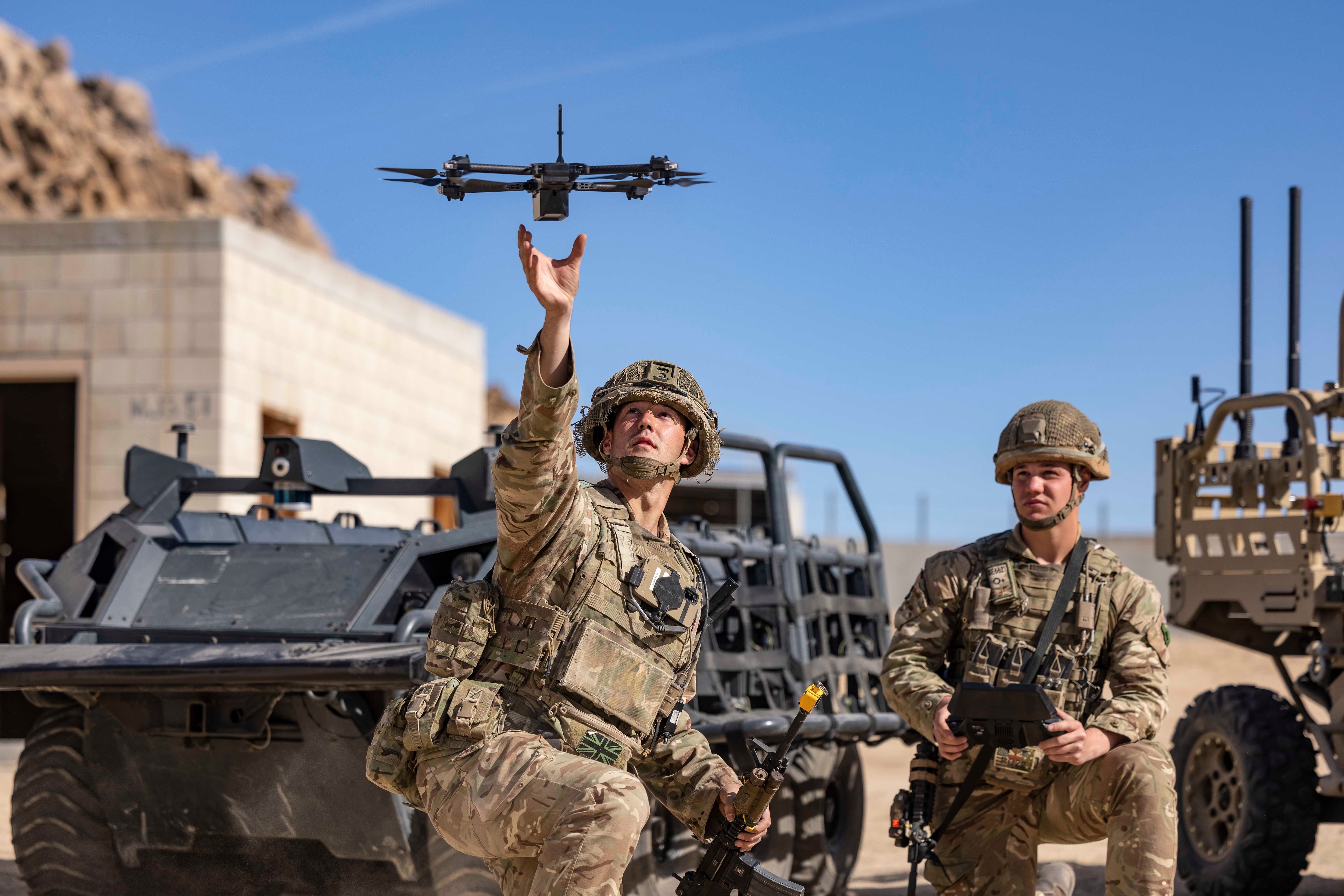LONDON — As the U.S. Defense Department looks to buy thousands of autonomous systems over the next few years through its Replicator initiative, Pentagon officials and industry leaders say production readiness and capacity will drive its selection process.
Deputy Defense Secretary Kathleen Hicks in late August unveiled the initiative, which aims to field a fleet of small, attritable, uncrewed systems across multiple domains over the next 18 to 24 months. Replicator is meant to change the way the department buys high-need capability to counter China’s military advantage.
Officials have been light on details about many aspects of the initiative, including where those platforms will come from and how the Pentagon will field them at such a rapid pace. Speaking to reporters Sept. 13 on the sidelines of the Air and Space Forces Association’s Air, Space and Cyber Conference in National Harbor, Md., Undersecretary of Defense for Acquisition and Sustainment Bill LaPlante said that as the department considers which systems to field through Replicator, production capacity will be a factor.
“One of the criteria of whatever the approach [is] that’s gone through should look . . . at production capacity,” he said. “Not just the capacity, but how close we are to production. There are some capabilities . . . some things that can go into production pretty fast. So, I’m not ruling out one or the other, but you should look at that as well.”
Across the Atlantic at the DSEI conference here, industry executives emphasized the need for clear signaling from the Defense Department to help companies — particularly small and mid-size firms — make smart investments in the manufacturing capacity needed to deliver on programs like Replicator.
Retired U.S. Army Lt. Gen. Neil Thurgood, who previously led the service’s Rapid Capabilities and Critical Technologies Office and is now senior vice president of Anduril Industries, said during a panel discussion at DSEI that companies must not only invest in the product they’re developing but also the manufacturing capability to produce it in large quantities.
“You can’t just make the thing. You’ve got to make the thing bankable,” Thurgood said during a Sept. 13 panel hosted by Defense News. “As soon as it looks like the user has a viable need for this, then you have to make the investment in the manufacturing process to keep pace with the decision.”
He continued: “There are a lot of examples in the U.S., U.K., Israel, other countries, where they made a decision and went right to scale — lots of examples where that worked really good because companies invested in a manufacturing process. And there are some examples where we didn’t quite invest fast enough, and it didn’t go as well as we wanted it to.”
Andrea Garrity, chief growth officer at mobile mesh networking company goTenna, stressed that companies must play close attention to DoD messaging to ensure their supply chain can meet those demands. She noted her company moved its manufacturing to the U.S. last year due to supply chain concerns and growing demand from U.S. government customers.
Still, it would help to have more insight from the government into their plans, she said — especially as the military prepares for a potential conflict with China in the coming years.
“If somebody came in and dropped a 10,000 goTenna order, we’ll work to scale up the manufacturing to get that delivered,” Garrity said. “But I always go back to the partnership discussion. If we know things are coming, then we can plan to ramp up to make sure that . . . we’re delivering capability that we need to deliver when it needs to be delivered where it needs to be delivered.”
On Replicator, given its short delivery timelines and potentially large quantities, some level of certainty from DoD is critical, according to Tom Foldesi, chief revenue officer at Saildrone.
Foldesi said the effort could be “game changing,” especially if DoD makes its capacity and capability needs clear and consistent enough for industry to adapt its supply base to the new cadence.
“Before we can even make things makeable, we have to be able to send a reliable supply chain signal,” he said. “For us to send a reliable supply chain signal, we have to have certainty.”
Brendan Groves, vice president of regulatory and policy affairs at Skydio, said dual-use companies that have a commercial and defense market are in a good position to respond to DoD’s near-term production needs for Replicator.
Skydio, a U.S. drone manufacturer that has supplied hundreds of systems to Ukraine, opened a new manufacturing facility in California earlier this year, creating a tenfold increase in its production capacity. That growth, Groves said, prepares the company to respond to DoD’s production needs, and he expects other dual-use companies are in a similar position.
“A lot of dual-use companies will be ready for this first phase, in part because they’re not waiting for the government,” he said. “We’re serving real needs right now across the U.S. government, across the enterprise. Those are the companies that will be ready to answer that call.”
Courtney Albon is C4ISRNET’s space and emerging technology reporter. She has covered the U.S. military since 2012, with a focus on the Air Force and Space Force. She has reported on some of the Defense Department’s most significant acquisition, budget and policy challenges.
Stephen Losey is the air warfare reporter for Defense News. He previously covered leadership and personnel issues at Air Force Times, and the Pentagon, special operations and air warfare at Military.com. He has traveled to the Middle East to cover U.S. Air Force operations.








